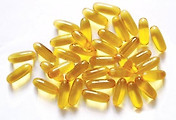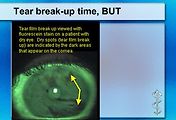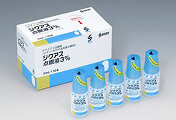안구건조증의 증상과 검사 결과의 불일치
Predictors of Discordance between Symptoms and Signs in Dry Eye Disease
안구 건조증은 몇년 전까지만 해도 Dry Eye Syndrome 약어로 DES라고 이야기 하곤 했다. 즉, 안구 건조 증후군이라는 용어를 사용하였다.
증후군. syndrome 잘알고 있다시피 증후군이란 용어는 그 원인을 알지 못하는 어떠한 질병에 대해서 기술하고자 할때 사용하는 용어였다.
하지만 이제는 DED Dry eye disease 라고 하여 "건성 안구 질병"라는 용어를 사용하게 된다.
안구 건조증에 대한 연구가 지속됨에 따라 그 원인(안구 표면의 염증)이 차츰차츰 밝혀지고 있으며, 각각의 원인에서의 기전들이 실험실 연구, 동물 연구, 병리학적인 연구, 임상적인 연구들에서 많이 밝혀 졌기 때문이다.
이에 따라서 syndrome 이라는 용어를 더이상 사용하고 있지 않으며 Disease 질병이라는 용어를 사용하면서 이젠 단순히 눈 불편함, 눈의 뻑뻑함 정도의 일시적인 증상을 나타내는 것이아니라, 치료를 요구하는 치료가 필요한 질병으로 인식하고 있다는 것이다.
이러한 변화중 가장 큰 하나의 변화는 "인공 눈물"은 더이상 치료약이 아니라는 인식의 변화이다.
인공 눈물 artificial tear 를 사용하는 것은 그 당시의 증상의 완화 를 가져다줄 뿐이지 안구건조증이라는 질병의 호전이나 완화를 가져다 주지는 못한다는 것이 밝혀 졌다. 이에 따라 단순히 인공 눈물만을 사용하던 경우에서 스테로이드 항염증 안약이나 사이클로스포린 항염증 안약을 기본적으로 사용 하는 것으로 바뀌고 있다.
즉, 안구 표면의 염증이 안구 건조증의 원인으로 밝혀 짐에 따라 염증을 치료할수 있는 안약이 가장 기본적인 치료약으로 사용되고 있으며 인공 눈물의 경우 단순한 증상의 완화일 뿐이지 장기간 사용시의 추가적인 이점은 없다는 것이 최근 연구의 결과이다.
거두절미하고 본 연구는 안구건조증에서 검사상의 결과와 환자가 느끼는 증상간의 불일치성에 대해서 연구를 하였다.
검사상으로 보이는 소견은 매우 경하고 미미한데도 불구하고 환자가 호소하는 증상은 극심하다던지...(증상>검사)
검사상 깜짝 놀랄 정도로 심한 경우인데도 환자는 아무런 통증을 느끼지 못한다던지....(검사>증상)
이러한 불일치성은 임상에서도 많이 경험할 수 있다.
본연구는 이러한 불일치성에 대해서 체계적으로 연구한 논문인데... 그 세세한 내용보다는 그 결과에 대해서 인식하고 있는 것이 더 중요해 보인다.
결론부터 살펴보자면.........
증상 > 검사
1. <만성 통증 증후군 Chronic pain syndrome>
과민성 장 증후군(IBS: irritable bowel syndrome), 섬유 근육통(fibromyalgia), 만성 골반통증 증후군(chronic pelvic pain)등을 일컫는 말로, 만성적인 신경통(neuropathic pain)을 앓는 질병을 이야기한다. 미약한 자극에도 심각한 수준의 통증을 앓게 되는데 이는 신경 말단의 이상 때문에 발생하게된다고 알려져 있다.
이러한 만성 통증 증후군을 앓는 환자에서 안구 건조증이 발생할 경우 작은 자극에도 심각한 수준의 통증이 발생하게 되어, 검사 소견에 비해 심한 증상을 호소 하게 된다.
2. <우울증>
우울증은 통계적으로 유의한 수치는 아니었으나 검사 소견에 비해 심한 증상을 보이는 경향이 있었다.
이는 만성 통증 증후군과 우울증이 어느정도 같은 스펙트럼 상에 있기 때문일 수도 있으며, 설령 통계적 유의성은 없어도 우울증의 유병률을 고려할때 "검사소견에 비해 심한 증상이 나타날것"을 예상 할 수 있게 해주는 의미있는 인자가 된다.
3. <알러지>와 <아토피>
아토피나 알러지가 있는 환자들은 각종 allergen(알러지 반응을 유발하는 항원)에 대해 쉽게 과민반응을 일으키게 되어 알러지성 결막염을 쉽게 앓게 된다. 이러한 알러지 결막염은 안구 건조증과 마찬가지로 안구 표면의 질병(ocular surface disease)이다.
실제 안구 건조증이 심한 경우 알러지 항원의 배출이 어려워 알러지 결막염이 잘 나타나고 알러지 결막염이 심한 환자에서 알러지로 인한 안구 표면의 염증성 변화에 의해 안구 건조증도 심하게 나타난다.
즉, 알러지와 아토피에서 나타나는 안구건조증은 일반적인 안구 건조증에 비해서 심하게 발현되게 되고, 겉으로보이는 검사 소견이 같아보인다고 하더라도 환자가 호소하는 증상은 더욱 심하게 나타난다.
4. <퇴행성 관절염 Osteoarthritis>
퇴행성 관절염이 직접적으로 안구 건조증과 어떠한 관계를 가진다기 보다는 만성적인 골관절염 증상을 앓고 있는 환자들에서 통증에 대한 역치가 낮아지게 되고 이에 따라서 안구 건조증의 작은 자극에도 심각한 수준으로 증상을 느끼는 경우가 많은 것으로 생각된다.
검사 > 증상
1. <쇼그렌 증후군>
쇼그렌 증후군에서는 안구건조증으로 인한 안구의 손상이 표면에만 국한된 것이 아니라, 각막의 심층부까지 도달하는 경우가 많다. 이에 따라서 각막 실질의 융해(stromal melting)나 각막의 천공이 일어나는 경우도 있는데... 각막 표면에서 통증을 느끼는 각막 신경이 손상이된 경우가 많기에 객관적으로 심한 소견에도 불구하고 환자가 느끼는 증상은 매우 미미한 경우가 많다.
2. <고령>
나이가 듦에 따라서 통증에 대한 전반적인 감수성이 변하게 되고, 특히 각막 신경의 민감도가 떨어지게 되는데, 이에 의해 안구건조증의 검사상의 소견이 심하다고 하더라도, 환자가 느끼는 증상은 심하지 않게 된다.
—–Introduction—–
안구 건조증 DED dry eye disease 에서 Symptom 과 Sign이 서로 일치하지 않는다는 잘 알려져 있다.
이러한 Discordance에 대해서 Predictor of Discordance에 대해서는 잘알려져 있지 않아
cohort stury design으로 DED 에서 Sx 과 Sn의 Discordance를 만드는 predictor에 대해서 연구하고자 한다.
—–Method—–
<Study Sample>
Groningen LOngitudinal Sicca StudY (GLOSSY) cohort
: clinic-based cohort of patients with DED from the tertiary dry eye clinic at the University Medical Center Groningen in the Netherlands.
: 2014년 9월 부터 DED로 방문한 년간 2000명 의 환자들이 포함된 코호트
: Groningen 병원이 쇼그렌 환자들을 refer받는 3차 병원이라 절반 정도의 환자들이 쇼그렌 환자들로 구성되어 있음.
<Risk factor Assessment>
Baseline 설문지 :
일반적인 DED의 Risk factor 를 포함하는 문항
동반된 질환에 대해 묻는 문항
하루에 PC및 Tablet을 이용하는 시간
원거리 안경 교정 여부
원거리 컨택트렌즈 교정 여부
본인의 건강 상태에 대한 본인의 평가
<Dry eye Symptom Assessment>
Ocular Surface Disease Index (OSDI) 이용
OSDI 설문지는 기존 총 12문항: the symptoms of ocular irritation consistent with DED and their impact on vision-related functioning
그중 지난주의 증상에 대해 묻는 10개의 문항이 5-point scale (0-4) from “none of the time”to “all of the time.”으로 구성되어 total OSDI score 는 0점에서 100점까지 구성되도록 함.
<Dry eye Sign Assessment>
Dry eye tests were performed in both eyes, in the following order:
1. Tear osmolarity (TearLab Osmolarity System (TearLab Corp, San Diego, CA)), – Ocul Surf. 2007;5:108-152.
2. Schirmer test without anesthesia, – Ocul Surf. 2007;5:108-152.
3. Staining of the cornea with fluorescein (Oxford Schema grading), – Ocul Surf. 2007;5:108-152.
4. Tear breakup time (TBUT), – Ocul Surf. 2007;5:108-152.
5. Staining of the nasal and temporal conjunctiva with lissamine green (Oxford Schema grading), – Ocul Surf. 2007;5:108-152.
6. Meibomian gland dysfunction. (averaging the quality score (0 clear; 1 cloudy; 2 granular; 3 toothpaste) and expressibility score (0 minimal; 1 light; 2 moderate; 3 heavy pressure needed) of the meibum) – Invest Ophthalmol Vis Sci. 2011;52:2006-2049.
<Statistical Analysis>
위와 같이 나온 6가지 결과들을 변환하여 아래와 같은 표가 나옴.
Each of the 6 dry eye tests was transformed to a common unit severity score between 0 and 1, with 0 being no sign of DED at all and 1 being the severest signs of DED.
이제 Discordance를 알아보기 위해서 자료 변환
증상을 의미하는 OSDI score와 위와 같은 방식으로 변환되어 징후를 의미하는 Composite Signs Severity Score를 서로 비교
All patients were ranked on the basis of the OSDI score and ranked on the basis of the composite signs severity score (both ranging from 0 [minimal symptoms/signs] to 1 [maximal symptoms/signs]).
The primary outcome variable of this study was the difference between the rank score of the OSDI and the rank score of the composite signs severity score. This difference is a score for discordance between symptoms and signs and theoretically ranges from -1 (minimal symptoms and maximal signs) to 1 (maximal symptoms and minimal signs).
-1 : 환자가 호소하는 Sx은 없으나 검사상 Sign은 심한것
+1 : 환자 호소하는 Sx은 심하나 검사상 Sign 은 경한것
—–Results—–
The discordance score between symptoms and signs was normally distributed (P = 0.20, Kolmogorove Smirnov test).
(The score had (by definition) a mean of 0, with a standard deviation of 0.38, and ranged from 0.95 to 0.93, indicating that discordance is also common in this patient sample.)
The correlation between symptoms score and signs severity score was 0.14 (P < 0.001, Spearman), which is line with findings by Sullivan et al.
—–Discussion—–
증상 > 검사
<CPS> : irritable bowel syndrome, fibromyalgia, and chronic pelvic pain.
CPSs as the strongest predictor of a discordance between symptoms and signs
Average higher symptom scores, whereas signs are similar or even less compared with patients without CPSs
기존 연구 CPSs : the most significant risk factor of having DED symptoms and a DED diagnosis.
This finding adds to the growing evidence that part of the dry eye population may show
signs of dysfunctional somatosensory pathways, indicating neuropathic ocular pain
<Depression>
Not significant but highly associated with greater symptoms than signs
(possibly because of the high cooccurrence of depression and CPS)
Nevertheless, depression might be a helpful indicator in clinical practice of discordance between symptoms and signs.
<Allergy and atopic disorders>
highly associated with greater DED symptoms than signs
Atopic patients are predisposed to develop hypersensitivity reactions to certain allergens mediated by an excessive immunoglobulin-E reaction and often have allergic conjunctivitis. Both allergic conjunctivitis and DED are inflammatory disorders of the ocular surface and are common in the general population.
It has been shown that most patients with itchy eyes consistent with allergic conjunctivitis also have dry eye.
<Osteoarthritis>
highly associated with greater DED symptoms than signs.
Knee osteoarthritis that those with neuropathic pain had lower knee pain threshold values than those without neuropathic pain, whereas femoral condylar cartilage thickness was similar between the 2 groups.
Our group has shown that high pain sensitivity and low pain tolerance are associated with symptoms of DED.
검사 > 증상
<Sjögren’s disease>and <GVHD>
Mizuno et al, showed in 158 patients with DED (38% with Sjögren’s disease) that those with Sjögren’s disease had worse signs than those without Sjögren’s disease, whereas subjective symptoms were similar.
This discordance was most pronounced in patients with primary Sjögren’s disease.
<increasing age>
Associated with fewer symptoms than signs.
Studies related to the impact of age on general pain sensitivity have ranged from increased to decreased sensitivity to no change.
Spierer et al : 129 subjects that mechanical and pain thresholds are correlated with age, implying decreased corneal sensitivity with age. They also showed that these thresholds are correlated with dry eye symptoms and ocular pain.
Our study adds further evidence that the ocular surface desensitizes with age and leads to fewer DED symptoms.
'논문으로 보는 안과 눈 이야기 > 안구건조증과 마이봄샘기능장애' 카테고리의 다른 글
| 의학번역 논문번역 : 안구건조증에서 오메가 3의 치료 : A Randomized, Double-Masked, Placebo-Controlled Clinical Trial of Two Forms of Omega-3 Supplements for Treating Dry Eye Disease (1) | 2017.08.13 |
|---|---|
| 최신 안과 의학논문번역 : 안구건조증과 통증 (24) | 2017.08.11 |
| 최신 안과 의학논문번역 : 콘택트렌즈로인한 안구건조증의 치료 (37) | 2017.08.07 |
| 최신 안과 의학번역 : 안구건조증과 콘택트렌즈 (12) | 2017.08.07 |









댓글